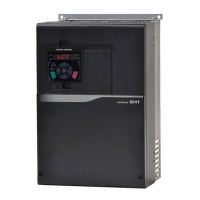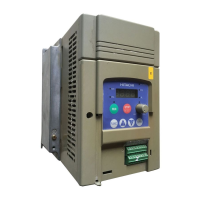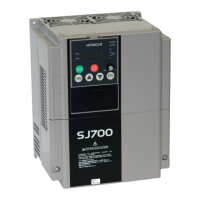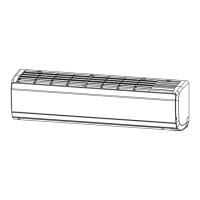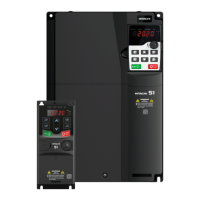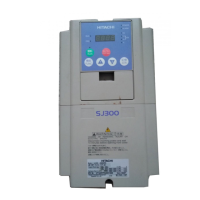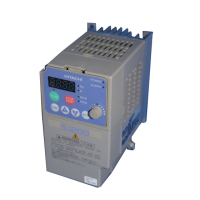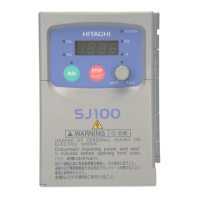■Serial communication
(Wiring example)
■24V power supply input/output
(Wiring example)
• SP and SN with the same name are internally connected, which are
available for a plurality of wiring.
• For the use of Modbus communication, contact to your supplier or
local Hitachi sales station.
SP terminal: RS-485 differential(+) signal
SN terminal: RS-485 differential(-) signal
RP terminal: Connect to SP through a termination
resistor
CM1 terminal: Connect to the signal ground of
external communication devices.
There are two SP terminals and they are connected
internally for daisy chain connection. The SN
terminals connection is same as the SP terminals too.
The maximum baud rate is 115.2kbps.
Termination resistor (120Ω) integrated
Enabled: RP-SN shorted
Disabled: RP-SN opened
24VDC output
power supply
terminal
This terminal supplies 24 VDC power for contact signals.
External 24 VDC
power supply
input (24 VDC)
Input external 24 VDC power supply to the inverter.
24 VDC power supply input permits to change
parameter settings and perform optional
communication operations without control power
supply.
Allowable input voltage
24VDC±10%
Max. allowable current 1A
External 24 VDC
power supply
input (0 VDC)
Connect CM1
Into the SG (signal ground) of
external devices,
Connect CM1
Into the SG (signal ground) of
external devices,
Connect CM1
Into the SG (signal ground) of
external devices,
Connect CM1
Into the SG (signal ground) of
external devices,
Connect CM1
Into the SG (signal ground) of
external devices,
Connect CM1
Into the SG (signal ground) of
external devices,
Connect CM1
Into the SG (signal ground) of
external devices,
Connect CM1
Into the SG (signal ground) of
external devices,
Connect CM1
Into the SG (signal ground) of
external devices,
Connect CM1
Into the SG (signal ground) of
external devices,
Connect CM1
Into the SG (signal ground) of
external devices,
Connect CM1
Into the SG (signal ground) of
external devices,
Connect CM1
Into the SG (signal ground) of
For enabling the termination
resistor, short-circuit between
RP and SN.
For enabling the termination
resistor, short-circuit between
RP and SN.
For enabling the termination
resistor, short-circuit between
RP and SN.
For enabling the termination
resistor, short-circuit between
RP and SN.
For enabling the termination
resistor, short-circuit between
RP and SN.
For enabling the termination
resistor, short-circuit between
RP and SN.
For enabling the termination
resistor, short-circuit between
RP and SN.
For enabling the termination
resistor, short-circuit between
RP and SN.
For enabling the termination
resistor, short-circuit between
RP and SN.
For enabling the termination
resistor, short-circuit between
RP and SN.
For enabling the termination
resistor, short-circuit between
RP and SN.
For enabling the termination
resistor, short-circuit between
RP and SN.
For enabling the termination
resistor, short-circuit between
Power supply
24V terminal
External DC24V power supply
• If connecting 24 VDC external power supply into the terminal
P+ and P-, it is able to change parameters, perform optional
communication, digital/analog input/output and running
EzSQ without the main power supply.
When using the external 24 VDC power supply from P + and
P-, be careful not to shut off the power supply while
operating the inverter, such as changing parameters or
operating other functions. In particular, please note that if
the external 24 VDC is cut off during storage processing to
the internal memory such as data read/write function of the
keypad, writing to the holding register by Modbus
communication and/or etc.
It may cause the memory error.

